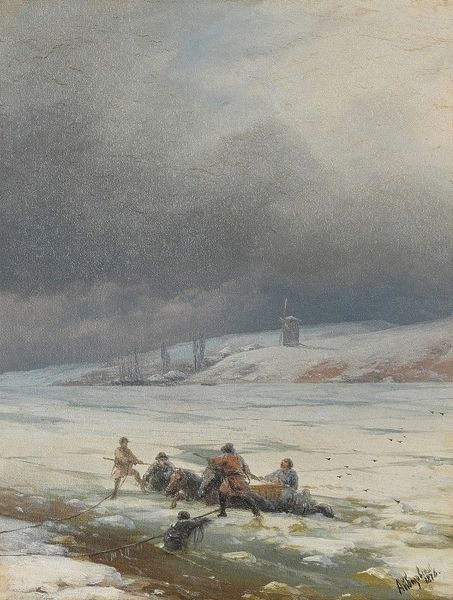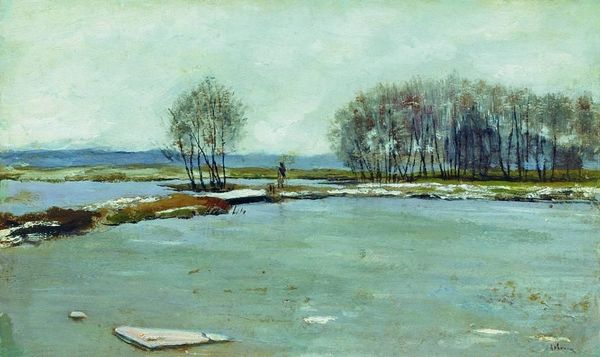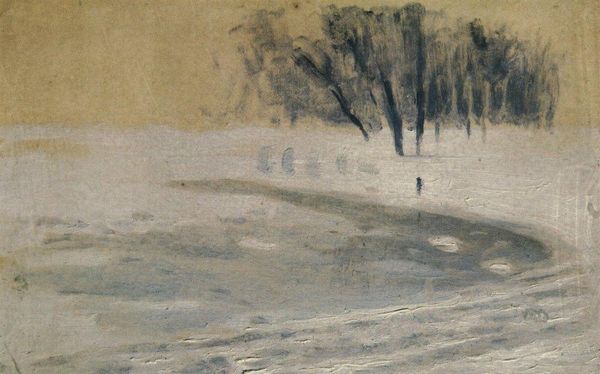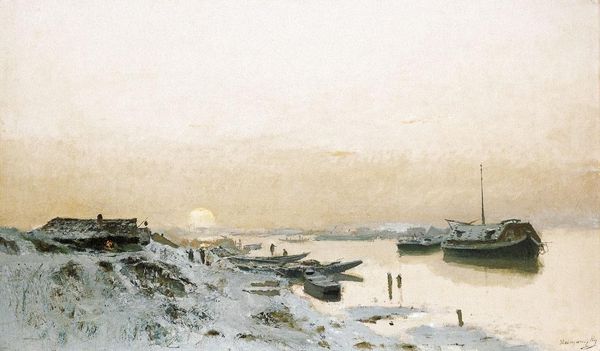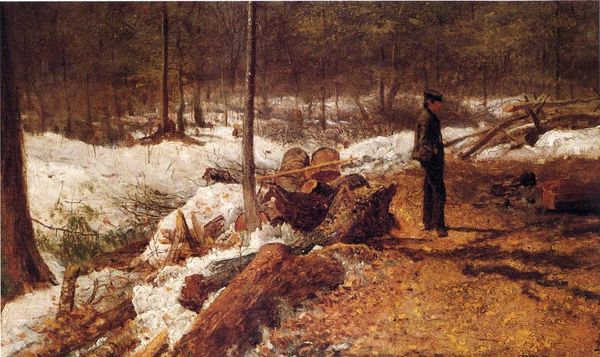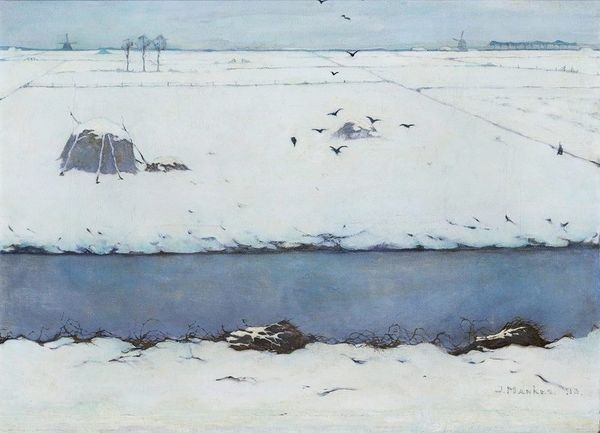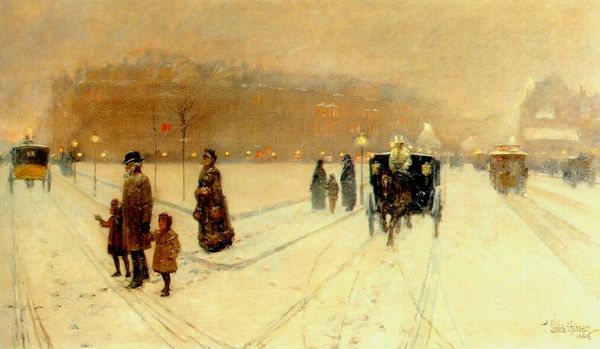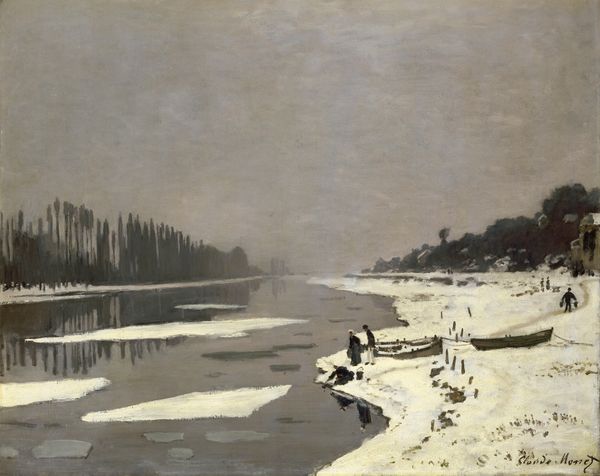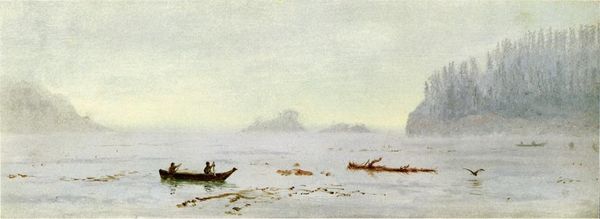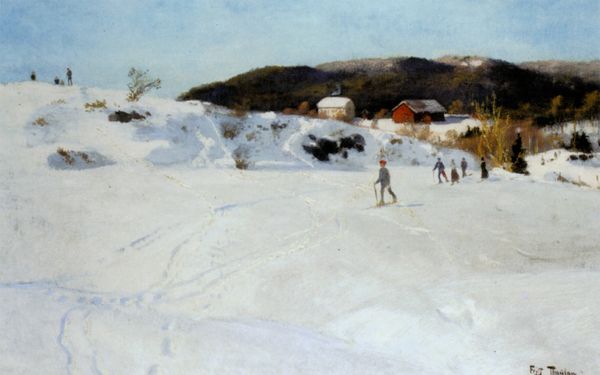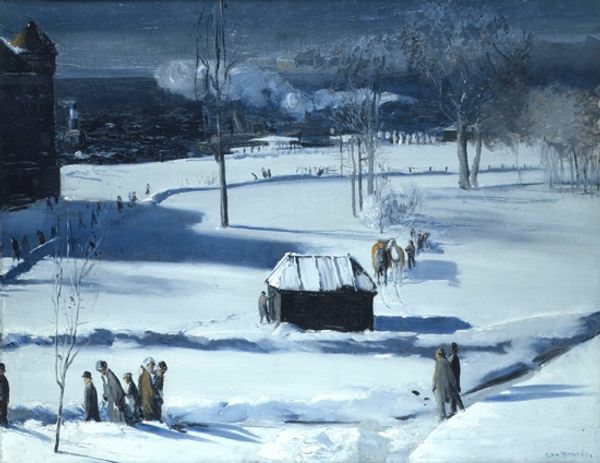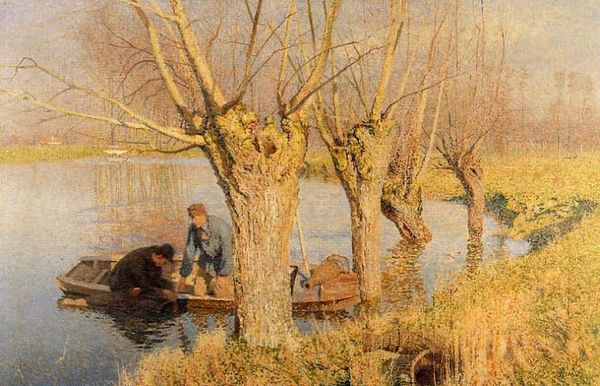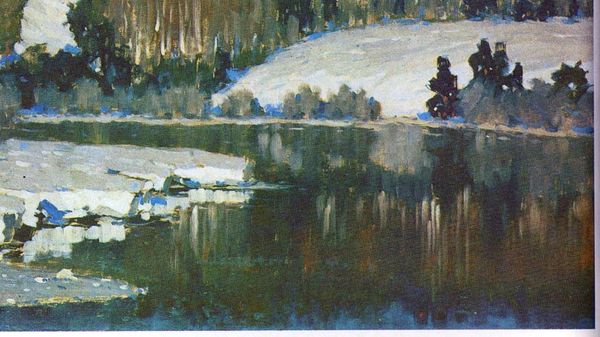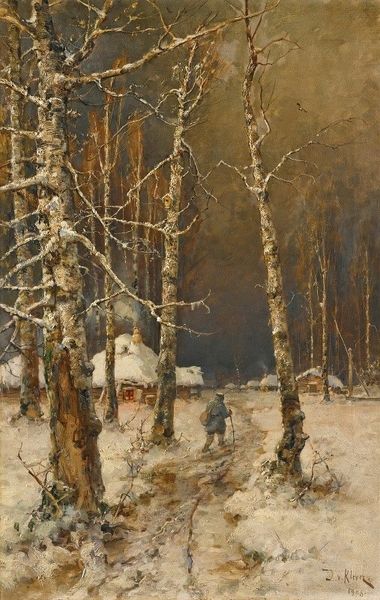
Copyright: Public domain
Emile Claus painted "The Ice Birds," probably in the late 19th century, using oils. The scene is of working-class people in a snowy landscape, enjoying a day of ice skating. It's a genre scene, but what does it tell us about the social role of art and the social conditions that shape artistic production? Claus was a Belgian painter, and Belgium in the late 1800s was an industrializing nation with a large working class. Artists like Claus, influenced by Realism and Impressionism, began to turn their attention to the lives of ordinary people. These images create meaning through their visual codes, such as the clothing of the figures, which marks them as working class, and cultural references, such as the act of ice skating itself, which was a popular pastime. Was Claus critiquing the institutions of art by focusing on everyday life? Or was he simply reflecting the changing social landscape of his time? As art historians, we can research the social and economic conditions of 19th-century Belgium to understand the artwork better. We can also look at Claus's biography and the art institutions of his time. In that way, we can better understand its meaning as something contingent on its social and institutional context.
Comments
No comments
Be the first to comment and join the conversation on the ultimate creative platform.
